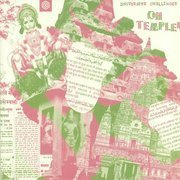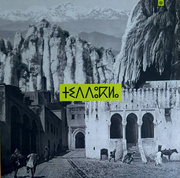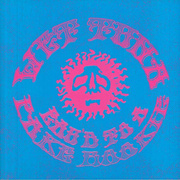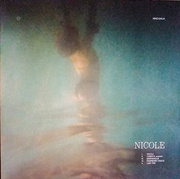- PLAY ALL / Idjah Hadidjah / Jugala Jaipongan / Various Artists - 01 Idjah Hadidjah & Jugala Jaipongan - Hiji Catetan.mp3 (Jaipongan Music of West Java + Reworks) / Idjah Hadidjah / Jugala Jaipongan / Various Artists - 02 Idjah Hadidjah & Jugala Jaipongan - Sanga.mp3 (Jaipongan Music of West Java + Reworks) / Idjah Hadidjah / Jugala Jaipongan / Various Artists - 03 Idjah Hadidjah & Jugala Jaipongan - Senggot.mp3 (Jaipongan Music of West Java + Reworks) / Idjah Hadidjah / Jugala Jaipongan / Various Artists - 04 Idjah Hadidjah & Jugala Jaipongan - Sinyur.mp3 (Jaipongan Music of West Java + Reworks) / Idjah Hadidjah / Jugala Jaipongan / Various Artists - 05 Idjah Hadidjah & Jugala Jaipongan - Tablo Kasmaran Naek Gendu.mp3 (Jaipongan Music of West Java + Reworks) / Idjah Hadidjah / Jugala Jaipongan / Various Artists - 06 Idjah Hadidjah & Jugala Jaipongan - Tawis Soca.mp3 (Jaipongan Music of West Java + Reworks) / Idjah Hadidjah / Jugala Jaipongan / Various Artists - 07 Bana Haffar - Slow Hiji Catetan.mp3 (Jaipongan Music of West Java + Reworks) / Idjah Hadidjah / Jugala Jaipongan / Various Artists - 08 Bergsonist - Gameloan.mp3 (Jaipongan Music of West Java + Reworks) / Idjah Hadidjah / Jugala Jaipongan / Various Artists - 09 Lightbath - Insinyur Cahaya.mp3 (Jaipongan Music of West Java + Reworks) / Idjah Hadidjah / Jugala Jaipongan / Various Artists - 10 Sarah Belle Reid - Scintilla.mp3 (Jaipongan Music of West Java + Reworks) / Idjah Hadidjah / Jugala Jaipongan / Various Artists - 11 Signals Under Tests - Dualism.mp3 (Jaipongan Music of West Java + Reworks) / Idjah Hadidjah / Jugala Jaipongan / Various Artists - 12 Fahmi Mursyid - Salawasna.mp3 (Jaipongan Music of West Java + Reworks) / Idjah Hadidjah / Jugala Jaipongan / Various Artists - 13 Kai Riedl & Suny Lyons - The Millionth Motion.mp3 (Jaipongan Music of West Java + Reworks) / Idjah Hadidjah / Jugala Jaipongan / Various Artists - 14 Ultrabillions - Imaginary Rebab No 4.mp3 (Jaipongan Music of West Java + Reworks)
- 01 Idjah Hadidjah & Jugala Jaipongan - Hiji Catetan.mp3 / Idjah Hadidjah / Jugala Jaipongan / Various Artists - 01 Idjah Hadidjah & Jugala Jaipongan - Hiji Catetan.mp3 (Jaipongan Music of West Java + Reworks)
- 02 Idjah Hadidjah & Jugala Jaipongan - Sanga.mp3 / Idjah Hadidjah / Jugala Jaipongan / Various Artists - 02 Idjah Hadidjah & Jugala Jaipongan - Sanga.mp3 (Jaipongan Music of West Java + Reworks)
- 03 Idjah Hadidjah & Jugala Jaipongan - Senggot.mp3 / Idjah Hadidjah / Jugala Jaipongan / Various Artists - 03 Idjah Hadidjah & Jugala Jaipongan - Senggot.mp3 (Jaipongan Music of West Java + Reworks)
- 04 Idjah Hadidjah & Jugala Jaipongan - Sinyur.mp3 / Idjah Hadidjah / Jugala Jaipongan / Various Artists - 04 Idjah Hadidjah & Jugala Jaipongan - Sinyur.mp3 (Jaipongan Music of West Java + Reworks)
- 05 Idjah Hadidjah & Jugala Jaipongan - Tablo Kasmaran Naek Gendu.mp3 / Idjah Hadidjah / Jugala Jaipongan / Various Artists - 05 Idjah Hadidjah & Jugala Jaipongan - Tablo Kasmaran Naek Gendu.mp3 (Jaipongan Music of West Java + Reworks)
- 06 Idjah Hadidjah & Jugala Jaipongan - Tawis Soca.mp3 / Idjah Hadidjah / Jugala Jaipongan / Various Artists - 06 Idjah Hadidjah & Jugala Jaipongan - Tawis Soca.mp3 (Jaipongan Music of West Java + Reworks)
- 07 Bana Haffar - Slow Hiji Catetan.mp3 / Idjah Hadidjah / Jugala Jaipongan / Various Artists - 07 Bana Haffar - Slow Hiji Catetan.mp3 (Jaipongan Music of West Java + Reworks)
- 08 Bergsonist - Gameloan.mp3 / Idjah Hadidjah / Jugala Jaipongan / Various Artists - 08 Bergsonist - Gameloan.mp3 (Jaipongan Music of West Java + Reworks)
- 09 Lightbath - Insinyur Cahaya.mp3 / Idjah Hadidjah / Jugala Jaipongan / Various Artists - 09 Lightbath - Insinyur Cahaya.mp3 (Jaipongan Music of West Java + Reworks)
- 10 Sarah Belle Reid - Scintilla.mp3 / Idjah Hadidjah / Jugala Jaipongan / Various Artists - 10 Sarah Belle Reid - Scintilla.mp3 (Jaipongan Music of West Java + Reworks)
- 11 Signals Under Tests - Dualism.mp3 / Idjah Hadidjah / Jugala Jaipongan / Various Artists - 11 Signals Under Tests - Dualism.mp3 (Jaipongan Music of West Java + Reworks)
- 12 Fahmi Mursyid - Salawasna.mp3 / Idjah Hadidjah / Jugala Jaipongan / Various Artists - 12 Fahmi Mursyid - Salawasna.mp3 (Jaipongan Music of West Java + Reworks)
- 13 Kai Riedl & Suny Lyons - The Millionth Motion.mp3 / Idjah Hadidjah / Jugala Jaipongan / Various Artists - 13 Kai Riedl & Suny Lyons - The Millionth Motion.mp3 (Jaipongan Music of West Java + Reworks)
- 14 Ultrabillions - Imaginary Rebab No 4.mp3 / Idjah Hadidjah / Jugala Jaipongan / Various Artists - 14 Ultrabillions - Imaginary Rebab No 4.mp3 (Jaipongan Music of West Java + Reworks)
Kompozycje sundajskiego choreografado tańca ketuk-tilu. Na wokalach śpiewaczka, która wydała niegdyś na Nonesuch. W pakiecie syntezatorowe przeróbki, m.in. od Bergsonist, ciekawe jest też rytmiczne D1.
-
"The singular expressions of music across Indonesia are seemingly limitless, though few are as dynamic and hold such a colorful history as jaipongan of West Java. The form of jaipongan we know today was born from the fields of Java where an early form of music called ketuk-tilu echoed over fields during harvest times. Known for intense and complex drumming coordinated with equally dynamic solo female dancing, ketuk-tilu performances included a rebab (a small upright bowed instrument), a gong, and ketuk-tilu (“three kettle gongs”). Though the original performance context of this music revolved around planting and harvesting rituals, with the singer accepting male dancing partners, over time ketuk-tilu became an outlet for village life expressing fertility, sensuality, eroticism, and, at times, socially accepted prostitution. Activities in the first half of the twentieth century that were best suited amongst the elements of harvest and outside of urban criticism.
Fast forward to 1961, the year the Indonesian government placed a ban on Western music, most specifically rock and roll, ostensibly to revive the traditional arts and have the country refocus on Indonesian ideals. Though, this attempt to reclaim, and in many ways conservatize, musical output had an unexpected musical outcome. In the early 70s the composer and choreographer Gugum Gumbira (1945-2020) took it upon himself to retrofit and creatively expand the core elements of ketuk-tilu into a contemporary form. One that would harness ketuk-tilu’s core dynamics and nod to the government’s pressure to revive traditional forms, while creating a fresh and socially acceptable art form where enticing movements, intimate topics and just the right degree sensuality had a collective musical expression. Born was jaipongan.





























